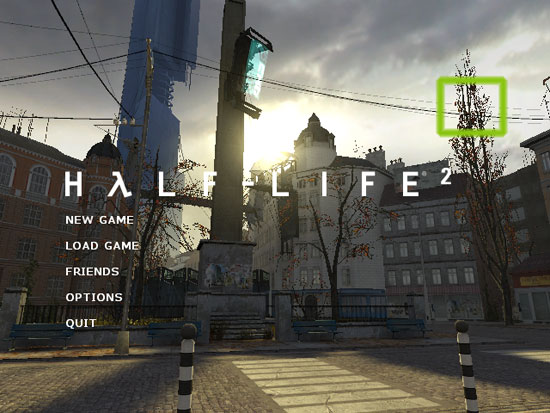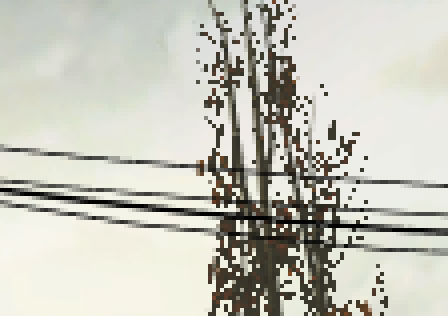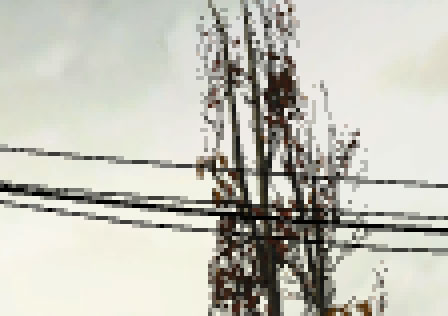NVIDIA's GeForce 8800 (G80): GPUs Re-architected for DirectX 10
by Anand Lal Shimpi & Derek Wilson on November 8, 2006 6:01 PM EST- Posted in
- GPUs
What's Transparency AA?
Transparency AA is NVIDIA's method of applying AA to transparent textures. Because MSAA only looks at one texture sample per pixel per polygon where more than one polygon slices a pixel area, it is not able to smooth jagged edges in transparent textures. In order to combat this, NVIDIA applies supersample AA to transparent textures. Their multisample transparency AA really doesn't do much for visual quality, so we will be ignoring it today. It only allows multisample through transparent texture areas and not of the texture itself.
Supersample AA performs a texture lookup at each sub-pixel to determine how much of the pixel falls on a transparent area of the texture and how much falls on an opaque area. The analog in ATI hardware is called Adaptive AA, which does basically the same thing. This generally has a very large performance impact for 3D scenes with many transparent textures (fence, bushes, leaves, and the like).
All screenshots on this page are 400% zooms of the highlighted portion of the following Half Life 2 screenshot:

Here's a look at Half-Life 2 with and without Transparency AA. We can clearly see how the leaves of the trees get smoothed out and look much better.

G80 No Transparency G80 Transparency AA
Hold mouse over links to see Image Quality
When comparing G70, G80, and R580, we have to remember that for NVIDIA hardware we've disabled gamma correct AA. It isn't possible to do this on ATI hardware, and thus we have a comparison of gamma correct AA on transparent textures as well.

G70 4X No Gamma G80 4X No Gamma ATI 4X Gamma
Hold mouse over links to see Image Quality
G70 and G80 don't look that different, but the R580 creates a kind of mushy look around the trees. This is another side effect of gamma correct AA and its potential negative impact on image quality. Worse examples include wire mesh or fences built with transparent textures: gamma correct AA can end up making parts of a fence disappear. Ideally, if we could apply gamma correct AA to high contrast edges and disable it for everything else, we'd see an image quality improvement. But the downsides just keep piling up with thin lines and transparent textures causing problems for gamma correction.
While transparency AA does enhance image quality a good deal, we do need to consider the performance impact. We'll revisit our antialiasing scaling graph from our CSAA page with Transparency and Adaptive AA enabled.

With G80, we see great performance at high resolution with high levels of AA while Transparency AA is enabled. With this level of performance, as long as R600 is able to keep up, we would love to check the Transparency AA check box every time we test with AA. For now, the performance degradation in R580 is just too high to justify at resolutions over 1600x1200 in most cases. An increase in resolution to a comparable performance level will net a higher gain in image quality.










111 Comments
View All Comments
DerekWilson - Thursday, November 9, 2006 - link
i'm sure there was a lot burried in there ... sorry if it wasn't easy to find.8800 gtx and gtx are both no louder than 7900 gtx. 1950 xtx still takes the cake for loudest graphics card around by a long shot -- especially after it heats up in a game.
crystal clear - Thursday, November 9, 2006 - link
My comments in Daily Tech on this subject-More "G80" Derivatives in February R
E: More info would be nice
By crystal clear on 11/8/06, Rating: 2
By crystal clear on 11/8/2006 8:03:43 AM , Rating: 2
If you link VISTA -SANTA ROSA platform-Core2DUO(merom)CPU line up(T7300,7500,7700 models)then a matching Graphics card
to complete the link.
So a G80 for laptops/notebooks?
The pairing of Intels Santa Rosa platform with Vista in the 2Q 07 is next big thing for the first tier notebook manufacturers & all they need is a matching G80 for this setup.
Unquote-
Nvidia currently caters to Desktop requirement/needs with the new G80 releases,wonder how the notebook/server versions will be-with Vista ofcourse.
yyrkoon - Thursday, November 9, 2006 - link
Vitual memory is probably a good thing for most cases, but in the graphics arena, this *could* potentially make for sloppy/ bad coding practises. Knowing a lot of game devers (some of which actually work for well known companies), I've heard them from time to time complain about maxing a 16x PCI-E pipe. What I'm trying to say here, is that while it would be a good thing for never having to run out of texture memory, but that system memory, and definately the swap disk can not hold a candle to the memory bandwidth that most Video cards are capable of. End result, is that you definately *will* get a performance hit. All this, and we already know the memory bandwidth capabilities of modern PCs, suffice it to say, the most we'll see from current systems is what ? 12-13K GB/s ? Even a 7800GS can do roughly 35 GB/s on card. A 7600GT ? 22GB/s ?Still I think Directx10 is a very good thing, and as I didnt read the whole article, perhaps a missed a little ? Reason being, I've been reading about Directx10 since April, and a friend of mine was privy to some of this information after an interview with ATI.
http://www.gamedev.net/reference/programming/featu...">http://www.gamedev.net/reference/programming/featu...
saratoga - Thursday, November 9, 2006 - link
I don't know how they threading really works, but its quite possible VM support is required in order to allow multiple threads to run without stepping all over each other,.saratoga - Thursday, November 9, 2006 - link
Sorry, should read "I don't know how THEIR threading works"falc0ne - Thursday, November 9, 2006 - link
I don't know what is the problem but I'm really unable to see the images within the latest articles from Anand...Can anyone give me a suggestion? What might be the cause of that?The thing is I'm really, really interested in these articles and I need to see those images. Thanks
yyrkoon - Thursday, November 9, 2006 - link
Oh, er, then in the options tab of Firefox, (tools->options->content) check the "load images" check box ;)falc0ne - Thursday, November 9, 2006 - link
well...it would've been simple but I'm afraid is not that...It might be the addblock extension from firefox, other than that I have nooo ideeea...Well I will use the IE tab option instead and load the pages using IE 7. Thanks anyway:)yyrkoon - Thursday, November 9, 2006 - link
Checked the exceptions list ? I know that firefox makes it really simple to block images from a site (to a point of being too easy).JarredWalton - Thursday, November 9, 2006 - link
If you've got AdBlock on Firefox, press Ctrl+Shift+A and you can see what it's blocking. If it blocks the images.anandtech.com stuff, you can then see which RegEx isn't working right and edit that.